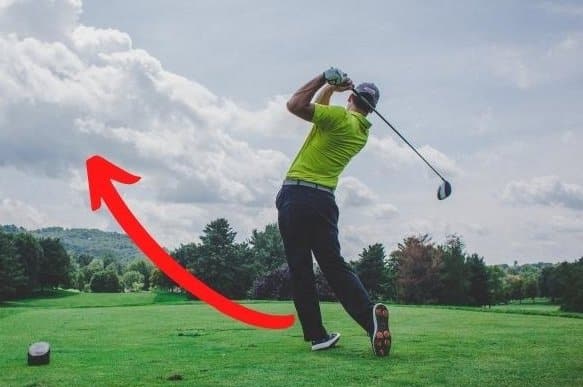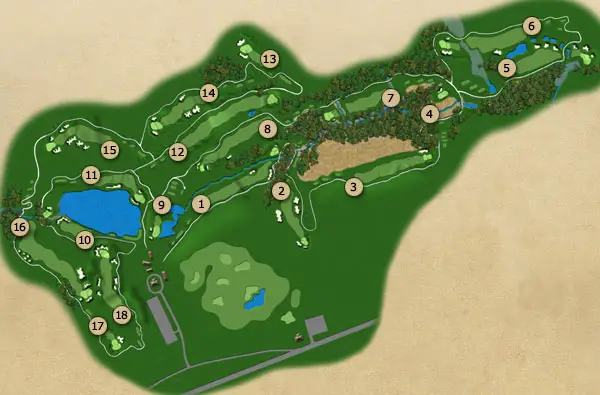How To Lower Launch Angle With Irons

Lowering the launch angle with irons is a fundamental skill for golfers seeking to gain better control, increased distance, and improved accuracy in their iron shots. Launch angle plays a vital role in determining the initial trajectory and overall performance of the golf ball. Whether you’re looking to navigate windy conditions, stop the ball quickly on the greens, or simply improve your iron play, understanding how to lower the launch angle is key to achieving your desired shot outcomes.
In this comprehensive guide, we will delve into the techniques, adjustments, and strategies that will help you lower the launch angle with your irons. From understanding the basics of launch angle and its impact on your shots to implementing practical adjustments in your setup and swing, we will provide you with actionable insights and step-by-step guidance.
By learning how to lower the launch angle with irons, you will gain greater command over the ball flight, enabling you to hit more controlled and precise shots. Whether you’re a beginner golfer looking to improve your iron play or an experienced player aiming to fine-tune your approach shots, this guide will equip you with the knowledge and tools to elevate your game to new heights.
So, let’s explore the techniques and strategies that will empower you to lower the launch angle with your irons, ultimately enhancing your overall golf performance and enjoyment on the course.

Understanding Launch Angle with Irons
To effectively lower the launch angle, it’s important to have a solid understanding of what launch angle represents in golf. Launch angle refers to the angle at which the ball takes off from the clubface relative to the ground. It significantly affects the distance and trajectory of your shots. By understanding the relationship between launch angle and various shot outcomes, you can make informed adjustments to achieve a desired lower launch angle.
Assessing the Need to Lower Launch Angle
Before diving into the techniques, it’s essential to assess why you need to lower the launch angle with your irons. Different golfers may have different reasons for seeking a lower launch angle, such as managing windy conditions, achieving better control on approach shots, or gaining distance on certain holes. By identifying your specific needs, you can tailor your approach accordingly.
Proper Ball Position and Stance
One of the key factors in lowering the launch angle is adjusting your ball position and stance. The placement of the ball in your setup can influence the launch angle of your shots. Let’s explore how you can optimize your ball position and stance to achieve a lower launch angle:
- Ball Position: Moving the ball back in your stance, closer to your back foot, can help decrease the launch angle. This promotes a more descending strike on the ball, resulting in a lower flight. Experiment with different ball positions to find the optimal placement for your desired trajectory.
- Stance Width and Weight Distribution: A narrower stance can encourage a steeper angle of attack, leading to a lower launch. Additionally, shifting your weight slightly more toward your front foot can further promote a downward strike on the ball. Experiment with these adjustments to find the stance that works best for you.
Remember to maintain proper balance and stability throughout your swing, even with adjustments to ball position and stance.
Controlling Swing Mechanics
Swing mechanics play a significant role in achieving a lower launch angle with your irons. Proper control of your swing path and clubface angle is essential. Let’s explore techniques to help you control your swing mechanics and reduce the launch angle:
- Swing Path: A more shallow or inside-out swing path can lead to a lower launch angle. Focus on keeping your swing on a flatter plane, with the clubhead approaching the ball from the inside. This helps to promote a more penetrating ball flight.
- Clubface Control: Pay attention to your clubface angle at impact. A slightly de-lofted clubface can help decrease the launch angle. Practice maintaining a slightly closed clubface at impact to achieve a more penetrating ball flight.
Proper swing mechanics require practice and fine-tuning. Film your swing or seek the guidance of a golf professional to ensure you’re implementing these adjustments effectively.
Adjusting Club Selection and Loft
The selection of the appropriate clubs and loft can significantly impact the launch angle of your iron shots. Let’s consider how you can make adjustments to your club selection and loft to achieve a lower launch angle:
- Club Selection: Opting for lower lofted irons, such as a 7-iron instead of a 9-iron, can naturally produce lower launch angles. Evaluate the distance and trajectory you desire for a particular shot and select the club that will help you achieve the desired launch angle.
- Loft Adjustment: Some modern irons offer adjustable loft settings that allow you to fine-tune the launch angle. By increasing the club’s effective loft, you can raise the launch angle, while decreasing it will lower the launch angle. Consult your club’s manual or seek assistance from a professional club fitter to make loft adjustments accurately.
Remember to consider the specific requirements of each shot and the course conditions when selecting the appropriate club and loft.
Equipment Factors and Customization
Various equipment factors can influence the launch angle with irons. Understanding these factors and customizing your equipment accordingly can help you achieve a lower launch angle. Let’s explore some considerations:
- Shaft Flex: The flex of your iron shaft can affect the launch angle. Stiffer shafts tend to produce lower launch angles, while more flexible shafts may lead to higher launch angles. Experiment with different shaft flex options to find the one that suits your swing and desired trajectory.
- Shaft Weight and Kick Point: The weight and kick point of the shaft can also impact the launch angle. Heavier shafts and lower kick points can help lower the launch angle, while lighter shafts and higher kick points may promote a higher launch. Consult with a professional club fitter to determine the optimal shaft characteristics for your swing and launch preferences.
Customizing your equipment based on your swing characteristics and launch angle goals can greatly enhance your iron play.
Practicing Trajectory Control
Practicing trajectory control is essential to consistently achieve a lower launch angle with your irons. Here are some drills and exercises to help you refine your trajectory control:
- Punch Shots: Practice hitting punch shots with lower trajectories. Focus on making crisp, downward strikes on the ball while keeping the flight low. This drill enhances your ability to control the launch angle effectively.
- Half Swings: Work on executing half swings with your irons. This helps you develop a feel for controlling the trajectory by adjusting the speed of your swing and the angle of attack.
By incorporating these trajectory control drills into your practice sessions, you will gain confidence and consistency in achieving the desired lower launch angle.
Understanding Course Management
Lowering the launch angle with your irons also involves strategic course management. Consider the following factors when deciding on your approach shots:
- Wind Conditions: Adjust your shot strategy to account for wind conditions. A lower launch angle can help mitigate the effect of strong headwinds, allowing for better distance control and accuracy.
- Green Conditions: Evaluate the firmness of the greens and their receptiveness to lower trajectory shots. In certain situations, a lower launch angle can help you control the spin and landing angle, leading to improved shot dispersion and stopping power on the greens.
Making informed decisions based on the course conditions will help you optimize your approach shots with a lower launch angle.
Analyzing Shot Feedback and Adjustments
Utilizing launch monitors and shot analysis tools can provide valuable feedback on your launch angles. Analyze the shot data, including launch angle, ball speed, and spin rate, to make necessary adjustments. Pay attention to the relationship between launch angle and other factors such as ball flight, distance, and shot dispersion. By studying the feedback, you can refine your technique and make appropriate changes to achieve the desired lower launch angle consistently.
Conclusion
Lowering the launch angle with irons requires a combination of technique, adjustments, and strategic decision-making. By understanding the impact of ball position, swing mechanics, club selection, and customization, you can achieve a more desirable trajectory for your iron shots. Practice trajectory control drills, analyze shot data, and make adjustments based on feedback to refine your skills.
Remember, lowering the launch angle is not a one-size-fits-all approach. It’s important to experiment, practice, and adapt your technique to find what works best for you. As you gain experience and confidence, you’ll be able to consistently achieve a lower launch angle with your irons.
Embrace the process of refining your iron play and enjoy the journey of mastering the art of trajectory control. Lowering the launch angle with your irons will give you greater control over your shots, allowing you to hit more accurate approaches, hold greens more effectively, and ultimately improve your scoring.
So, take the knowledge and techniques you’ve gained from this guide, head out to the practice range, and start honing your skills. Remember to be patient, stay focused, and maintain a growth mindset. With dedication and practice, you’ll be well on your way to becoming a skilled iron player capable of achieving the lower launch angles that will take your game to the next level.
Happy golfing!






